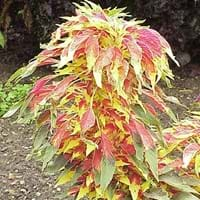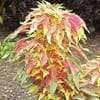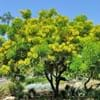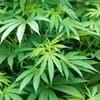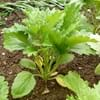Type
Ornamental Plants
Ornamental Plants
Origin
Africa, Southern Asia
Africa, Southern Asia
Types
Not Available
Not Available
Habitat
Mediterranean region, Subtropical climates, tropical environments, Tropical regions
Mediterranean region, Subtropical climates, tropical environments, Tropical regions
USDA Hardiness Zone
1-15
1-15
AHS Heat Zone
12 - 5
12 - 5
Sunset Zone
H1, H2, 1a, 1b, 2a, 2b, 3a, 3b, 4, 5, 6, 7, 8, 9, 10, 11, 12, 13, 14, 15, 16, 17, 18, 19, 20, 21, 22, 23, 24
H1, H2, 1a, 1b, 2a, 2b, 3a, 3b, 4, 5, 6, 7, 8, 9, 10, 11, 12, 13, 14, 15, 16, 17, 18, 19, 20, 21, 22, 23, 24
Habit
Upright/Erect
Upright/Erect
Flower Color Modifier
Bicolor
Bicolor
Fruit Color
Tan, Black
Tan, Black
Leaf Color in Spring
Yellow, Red, Green, Burgundy
Yellow, Red, Green, Burgundy
Leaf Color in Summer
Yellow, Red, Green
Yellow, Red, Green
Leaf Color in Fall
Yellow, Red, Green
Yellow, Red, Green
Leaf Color in Winter
Light Green
Light Green
Plant Season
Summer, Fall
Summer, Fall
Sunlight
Full Sun, Partial Sun
Full Sun, Partial Sun
Type of Soil
Loam, Sand
Loam, Sand
The pH of Soil
Acidic, Neutral, Alkaline
Acidic, Neutral, Alkaline
Soil Drainage
Well drained
Well drained
Bloom Time
Summer, Late Summer, Early Fall, Fall
Summer, Late Summer, Early Fall, Fall
Tolerances
Drought
Drought
Where to Plant?
Container, Ground
Container, Ground
How to Plant?
Seedlings
Seedlings
Plant Maintenance
Medium
Medium
Watering Requirements
Average Water Needs, Requires regular watering
Average Water Needs, Requires regular watering
In Summer
Lots of watering
Lots of watering
In Spring
Moderate
Moderate
In Winter
Average Water
Average Water
Soil pH
Not Available
Not Available
Soil Type
Clay, Loam, Sand
Clay, Loam, Sand
Soil Drainage Capacity
Clay, Loamy, Sand
Clay, Loamy, Sand
Sun Exposure
Full Sun
Full Sun
Pruning
No need to prune, No pruning needed, Remove damaged leaves, Remove dead branches, Remove dead leaves
No need to prune, No pruning needed, Remove damaged leaves, Remove dead branches, Remove dead leaves
Fertilizers
All-Purpose Liquid Fertilizer, organic fertlizers
All-Purpose Liquid Fertilizer, organic fertlizers
Pests and Diseases
Prodenia, Red blotch
Prodenia, Red blotch
Plant Tolerance
Drought
Drought
Flowers
Insignificant
Insignificant
Flower Petal Number
Single
Single
Foliage Texture
Bold
Bold
Foliage Sheen
Matte
Matte
Attracts
Not Available
Not Available
Allergy
Not Available
Not Available
Aesthetic Uses
Borders
Borders
Beauty Benefits
Not Available
Not Available
Environmental Uses
Air purification
Air purification
Medicinal Uses
Diarrhea, Stomach Ulcers
Diarrhea, Stomach Ulcers
Part of Plant Used
Leaves, Seeds
Leaves, Seeds
Other Uses
Not Available
Not Available
Used As Indoor Plant
No
No
Used As Outdoor Plant
Yes
Yes
Garden Design
Tropical
Tropical
Botanical Name
AMARANTHUS tricolor 'Perfecta'
AMARANTHUS tricolor 'Perfecta'
Common Name
Joseph's Coat
Joseph's Coat
In Hindi
tandalja bhaji
tandalja bhaji
In German
Tampala
Tampala
In French
Tampala
Tampala
In Spanish
Tampala
Tampala
In Portuguese
Tampala
Tampala
In Polish
Tampala
Tampala
Phylum
Tracheophyta
Tracheophyta
Class
Magnoliopsida
Magnoliopsida
Order
Caryophyllales
Caryophyllales
Family
Amaranthaceae
Amaranthaceae
Genus
Amaranthus L
Amaranthus L
Clade
Angiosperms, Core eudicots, Eudicots
Angiosperms, Core eudicots, Eudicots
Tribe
Not Available
Not Available
Subfamily
Amaranthoideae
Amaranthoideae
Number of Species
Not Available
Not Available
Importance of Tampala and Tampala
Want to have the most appropriate plant for your garden? You might want to know the importance of Tampala and Tampala. Basically, these two plants vary in many aspects. Compare Tampala and Tampala as they differ in many characteristics such as their life, care, benefits, facts, etc. Every gardener must at least have the slightest clue about the plants he wants to plant in his garden. Compare their benefits, which differ in many ways like facts and uses. The medicinal use of Tampala is Diarrhea and Stomach Ulcers whereas of Tampala is Diarrhea and Stomach Ulcers. Tampala has beauty benefits as follows: Not Available while Tampala has beauty benefits as follows: Not Available.
Compare Facts of Tampala vs Tampala
How to choose the best garden plant for your garden depending upon its facts? Here garden plant comparison will help you to solve this query. Compare the facts of Tampala vs Tampala and know which one to choose. As garden plants have benefits and other uses, allergy is also a major drawback of plants for some people. Allergic reactions of Tampala are Not Available whereas of Tampala have Not Available respectively. Having a fruit bearing plant in your garden can be a plus point of your garden. Tampala has no showy fruits and Tampala has no showy fruits. Also Tampala is not flowering and Tampala is not flowering . You can compare Tampala and Tampala facts and facts of other plants too.
